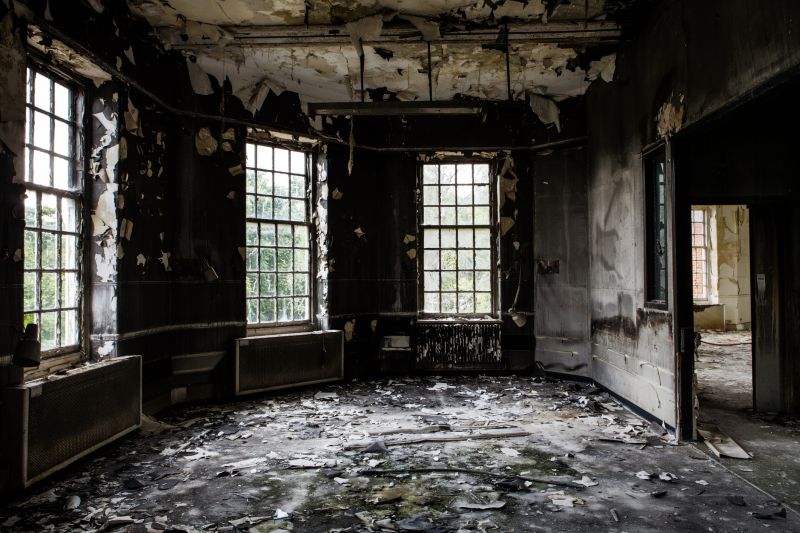Favorite Fire Restoration Tools For Professional-Grade Damage Repair
Browse a selection of trusted tools and supplies favored by restoration experts for quality results.
 Fire restoration is a complex process that requires specialized products designed to address the unique challenges posed by fire damage. After a fire incident, property owners and restoration professionals need a comprehensive set of tools and materials to effectively clean, repair, and restore affected areas. These products help in removing soot and smoke residues, neutralizing odors, and repairing structural damages caused by flames and heat. The selection of appropriate fire restoration products is essential for ensuring safety, efficiency, and thorough remediation.
Fire restoration is a complex process that requires specialized products designed to address the unique challenges posed by fire damage. After a fire incident, property owners and restoration professionals need a comprehensive set of tools and materials to effectively clean, repair, and restore affected areas. These products help in removing soot and smoke residues, neutralizing odors, and repairing structural damages caused by flames and heat. The selection of appropriate fire restoration products is essential for ensuring safety, efficiency, and thorough remediation.
Top Overall Option
Comprehensive Fire Damage Restoration Kit
A versatile kit that includes a selection of cleaning agents, odor neutralizers, sealants, and protective gear designed to address multiple aspects of fire damage restoration. Ideal for both professional restorers and serious DIY enthusiasts, it offers a well-rounded assortment of products to facilitate effective cleanup and repair.
Types of Products For Fire Restorations
Soot and Smoke Removers
Specialized cleaning agents formulated to eliminate soot and smoke residues from various surfaces, including walls, ceilings, and furnishings.
Odor Neutralizers
Products designed to neutralize and eliminate persistent smoke odors from indoor environments, improving air quality post-fire.
Fire-Resistant Sealants
Sealants used to prevent the spread of fire and smoke through cracks and joints in walls and ceilings.
Structural Patching Compounds
Materials for repairing damaged drywall, plaster, and other structural components affected by fire.
Fire-Resistant Insulation
Insulation materials that resist heat transfer and help contain fire spread within structures.
Air Scrubbers and Purifiers
Equipment that filters airborne particles and odors, improving indoor air quality during restoration.
Personal Protective Equipment
Respirators, gloves, and protective suits to ensure safety during cleanup and repair activities.
Thermal Imaging Cameras
Devices used to detect hidden hotspots and assess damage severity behind walls and ceilings.
Moisture Meters
Tools for measuring moisture levels in materials to prevent mold growth and ensure thorough drying.
Cleaning Cloths and Sponges
Absorbent and durable cloths for manual cleaning of soot and residues from surfaces.
Fire-Resistant Drywall
Specialized drywall panels that resist ignition and help contain fire spread within walls.
Smoke Damage Restoration Sprays
Sprays formulated to neutralize smoke stains and residues on various surfaces.
Fire-Resistant Paints
Paints designed to add a layer of fire resistance to walls and ceilings after cleaning and repairs.
Dehumidifiers
Equipment used to remove excess moisture from the air and materials, preventing mold growth.
Heavy-Duty Cleaning Agents
Powerful cleaning solutions formulated to break down soot, grease, and smoke residues.
Popular Choices
Widely used for removing stubborn soot and smoke stains from surfaces during fire cleanup.
Commonly employed to combat lingering smoke odors in residential and commercial spaces.
Popular for improving indoor air quality during and after fire restoration efforts.
Frequently selected for rebuilding walls in fire-affected areas due to their fire-resistant properties.
Essential gear for safety during soot removal and cleanup tasks, widely used by professionals.
Popular tools for assessing damage and detecting hidden hotspots behind structures.
Commonly used to measure moisture levels to ensure proper drying and prevent mold.
Frequently used to seal cracks and joints, helping to prevent further fire spread.
Popular for manual cleaning tasks during fire damage cleanup.
Commonly employed to control humidity levels and facilitate drying after fire damage.
In the aftermath of a fire, cleaning supplies such as heavy-duty detergents and soot removers become vital for surface cleaning. Fire damage often leaves behind persistent smoke odors, making odor neutralizers and air scrubbers critical for air quality management. For structural repairs, a variety of patching compounds, sealants, and fire-resistant materials are used to restore walls, ceilings, and other surfaces. Additionally, specialized equipment like moisture meters and thermal imaging cameras assist in assessing the extent of damage and identifying hidden issues.
Choosing the right products involves understanding the scope of the fire damage, the types of surfaces involved, and the safety standards required for restoration work. Proper protective gear, including respirators and gloves, is also necessary to safeguard workers from potentially hazardous residues. Whether performing DIY restoration or coordinating with professional services, having access to a broad range of reliable products can streamline the process and help achieve a thorough restoration outcome.
Key Buying Considerations
- Type of surface to be cleaned or repaired, such as drywall, wood, or fabric.
- Severity and extent of fire and smoke damage to determine appropriate products.
- Effectiveness of odor neutralizers in eliminating persistent smoke smells.
- Compatibility of sealants and patching compounds with existing building materials.
- Fire resistance ratings of insulation and drywall to meet safety standards.
- Safety features and certifications of protective gear and equipment.
- Ease of use and application methods for cleaning and repair products.
- Drying times required for cleaning agents and repair materials.
- Availability of professional-grade versus DIY-friendly products.
- Cost considerations balanced with product effectiveness and safety.
- Environmental conditions of the affected space, including humidity and ventilation.
- Compatibility of products with existing cleaning and restoration protocols.
- Durability and longevity of repair materials used in structural restoration.
- Availability of technical support or instructions for complex products.
- Regulatory compliance and safety standards relevant to fire restoration products.
